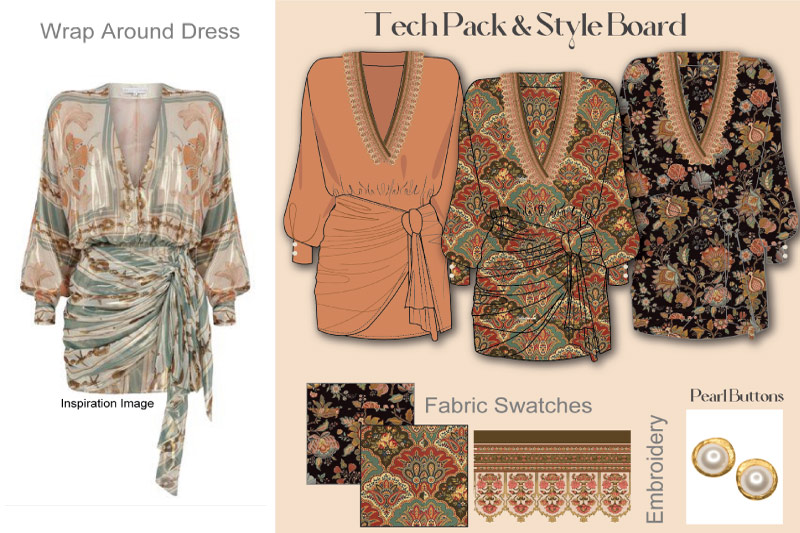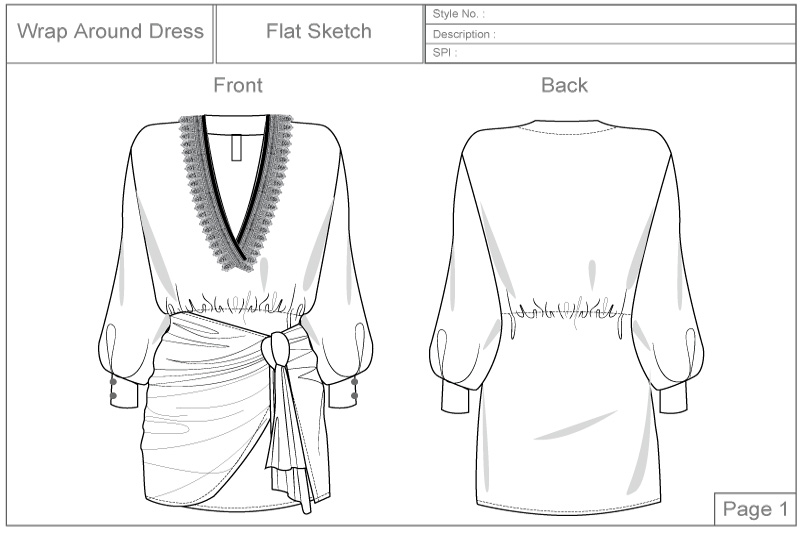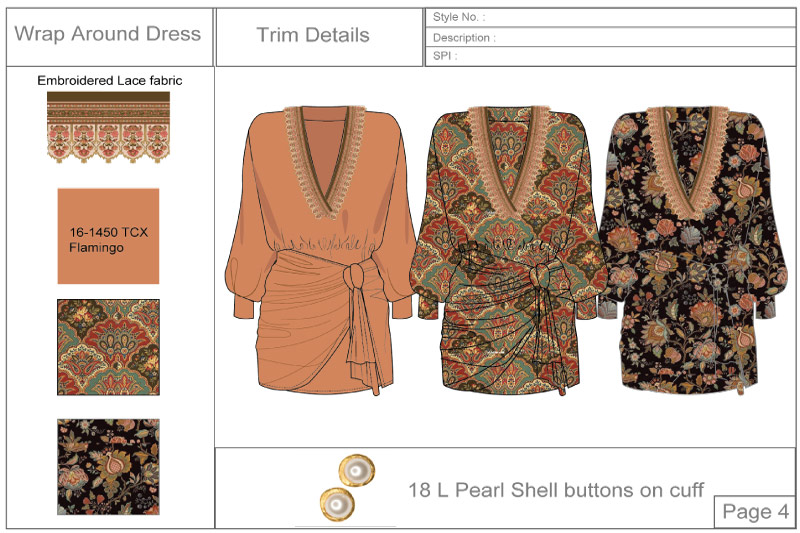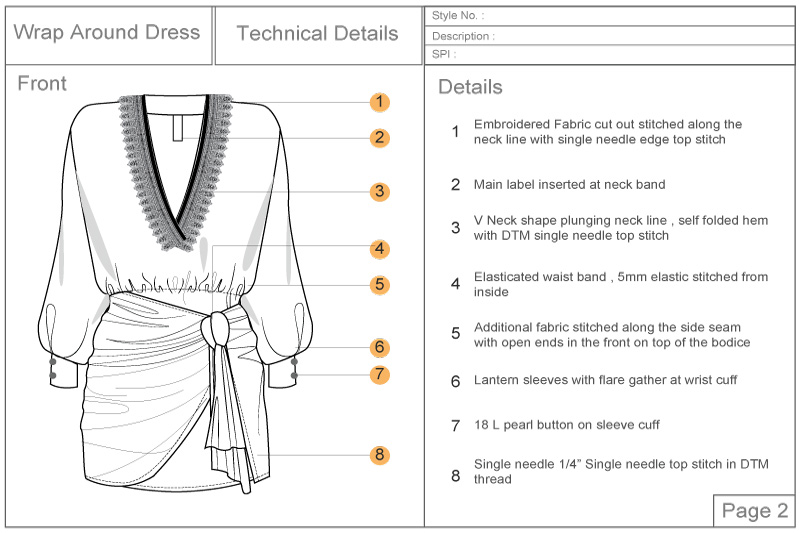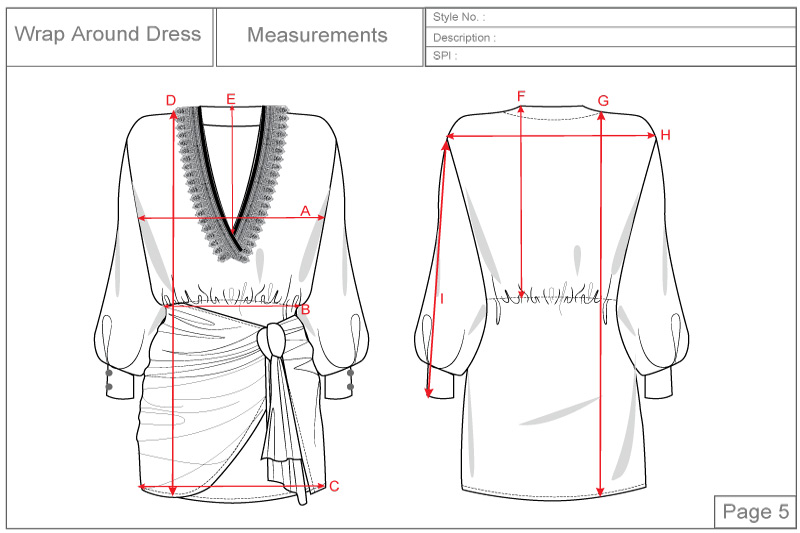Ultimate Guide to Fashion Tech Packs Part II ( What Does Fashion Tech Pack Include )
Ultimate Guide to Fashion Tech Packs Part II continues our previous post of our Ultimate Guide Series. If you have not read Ultimate Guide to Fashion Tech Packs Part I, please read it. This article will explain the tech pack with visual examples and its importance in the garment industry. I am writing about my experience as a fashion tech pack designer. If you like and find it interesting, please give your love by following my Instagram page.
What does a Fashion Tech Pack Include?
The content of a tech pack is subjective and depends on the type of product and its design. Tech pack designers may include extra information beyond basic requirements in their tech packs. A garment tech pack outlines standard information, although specifics can vary based on the design. To the untrained eye, tech pack information may seem complex. But, it is straightforward for those familiar with its contents and usage. Preparing a tech pack simplifies the process, not complicates it. Specific points are standard and mandatory in every tech pack. Let’s discuss what an ideal tech pack should include.
Product Brief or Style Brief
The garment’s product brief contains basic information about the style designers and manufacturers refer to. Information in the style brief includes the Style Name, Product Code, Type, Color, Gender, Age group, etc. Additional information includes the Date of Creation, Season, and Country of Origin. This information references the product in meetings and calls with manufacturers.
Fashion Flats / Technical Flats / Technical Drawing / Flat Sketch
As in the heading, whatever you call it, all mean the same thing. Here, we refer to it as a flat sketch. Fashion flats showcase design details from various angles: front, back, side, and inside out. Flat sketches give an overall picture of a garment’s look and are essential for pattern-making. Designers should design the flat sketches using CAD software and in black and white for clarity. The technical flat sketch is the building block upon which the technical designer prepares the garment tech pack. Having a comprehensive garment flat sketch is essential before starting the tech pack. For detailed information about the fashion flat sketch design process, refer to the post “Fashion Flats.”
Professional Flat Sketches Making Process
Here are some tips for preparing comprehensive fashion flat sketches. Always include multiple views of the garment. It would help if you showed the garment’s front, back, side, and inside-out view. Adopt a detail-oriented approach. Include all trims so that it gives an understanding of what goes where. The details include collars, plackets, cuffs, fastenings, bar tacks, and artwork placement. The tech pack designer should mention every seam, dart, stitch, and button. Use solid lines for seam lines and dashed lines for stitching in the sketches. Avoid overcomplicating sketches unless it is necessary. Use plain black and white without shading for clarity.
Color or Print Options / Color Combo
This section in the tech pack outlines the garment’s color. Color options also give an idea of what color goes well with the garment and is more likely to gain sales. While preparing the tech pack, you should have the color options for the style. Whichever option looks good and has selling potential, you can produce that option. Always use the Pantone color code when providing color options on the tech pack. Garment Industry follows the Pantone color code for fabric dying and printing.
Stitching & Garment Construction Details
Stitching and construction details of a style are very useful in the assembly line. During batch processing of a garment, what stitch goes on which part, and what is the SPC/SPI? Those details are important instructions for the line manager or production manager. Stitching types, seam placement, button and zipper placement, and stitch type are examples. You may get the wrong product if the designer does not specify the details in a specific order. I have written a detailed post. Please refer to “stitching and garment construction detailing.”
Embellishment Details (Prints / Embroidery / Applique)
The beauty of a garment is in its embellishments, making it worth wearing. Embellishment specifications are crucial in a tech pack. A designer should explain the detailing with reference images and other supplements. The designer should provide details with vector files and color code, whether print embroidery applique or patchwork.
Trims Label and Care Information
Trims make the garment look rich and are also part of branding. The trims include the care Label, Main label, Loop label, patchwork, and zipper pullers. Care instructions are helpful, guiding end customers on how to clean and maintain each garment after purchase.
Measurement Guideline and Graded Garment Measurement Spec Sheet
The measurement spec sheet is the most essential document in the tech pack. It gives detailed measurements of garments for pattern making. The spec sheet has two components. Measurement guideline, and the 2nd is the graded spec sheet from the smallest size to the biggest. The measurement guideline is a graphical presentation explaining how to take measurements. The measurement guideline is indicated either by numbers or alphabetical letters. The spec sheet gives the measurement against those alphabetical indicators. Those pointers refer to a specific measurement provided in the spec sheet. Some advanced measurement spec sheets also mention tolerance for the respective sizes. Common measurements in a spec sheet are body length, chest, waist, hips, armhole, shoulder drop, and neck opening. Those are called base measurements. A detailed spec sheet may contain more points. Refer to the Garment Measurement Specification Post for a detailed explanation of the measurement spec sheet.
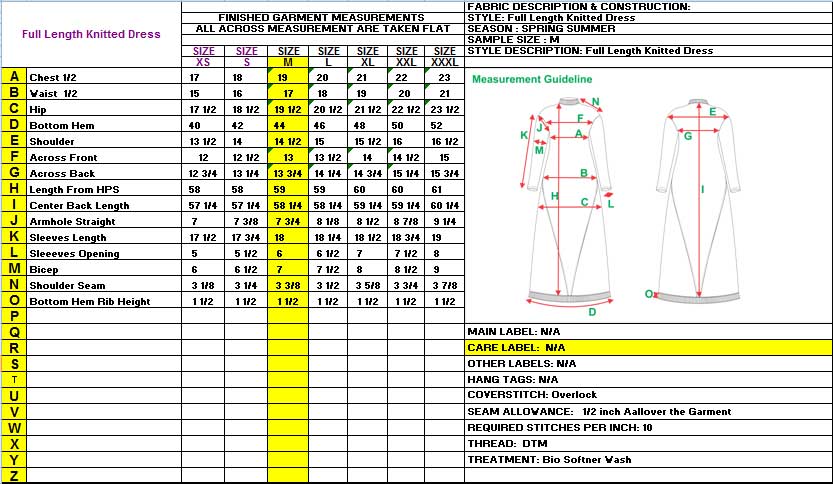
Graded Measurement Spec Sheet Example
Bills of Material (BOM)
Bills of Material (BOM) is a checklist of all raw materials used in garment production. The BOM may also include the expected price of raw materials calculated per piece. Garment spec technicians often provide bills of materials in a table format, usually in a spreadsheet. The table shows the cost and consumption of all raw materials needed to make one garment. The details include fabric, thread, trims, closures, labels, packaging, etc. It should list quantities for each item in a separate column for easy visualization and calculation. Please refer to “Bills of Materials: Essential for Apparel Cost Estimation” for a detailed study of BOM.
Additional To Tech Pack Components
Commonly used parts like tags, labels, sewing thread, and packaging materials are essential for any costing table, regardless of the product type. While not mandatory, including these details is beneficial.
If you find my post ( Ultimate Guide to Fashion Tech Packs Part II ) exciting and informative, consider following my Instagram page and sharing your feedback there. Also, visit our tech pack template store if you want ready-to-use tech packs. Your comments and feedback are valuable to me, and we would love to hear your opinion on this.
